First off, thanks for filling out and submitting the survey. I got almost 40 valid responses, which I thought was a good turnout! Without further adieu, here are some of the results:
Location
This guidebook is obvious tied to a geographical area: Colorado; as well an activity: bikepacking. The results were pretty much what I would have predicted:

Most people who filled out the survey were from Colorado. Makes sense: if you live in Colorado, you’re generally going to be more interested in 14ers than someone out of state.
Of course, the sole audience of the guidebook won’t be locals; rather it should be of use to anyone coming to visit the State; either from the US or abroad. I’ll have a few resources on how to get around to start your trip.
Gender
I asked about Gender, but like the Location question, it doesn’t much matter: I would like to put out a guidebook regardless of gender, age, etc. Long story short: More man dudes than anyone.
Bikepacking Experience
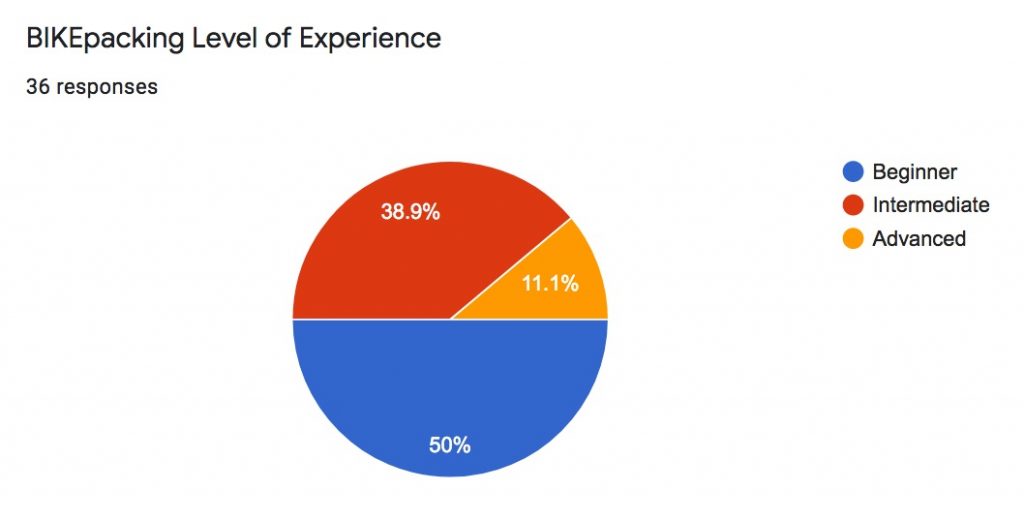
This was somewhat of an interesting result, as half of the people who responded to this question thought of themselves as a Beginner, with only 10% thinking them as Advanced.
This self-assessment though belies some of the responses for what sort of bikepacking trips the respondents have taken. For example: completing large parts of the Great Divide Mountain Bike Route, Colorado Trail, the Baja Divide. These are very long, committing routes! I would say anyone who has done these routes comes out in the end as a fairly skilled and experienced bikepacker.
Others responded as never trying bikepacking before, but are very interested in trying it out, themselves. Awesome.
I wonder if my question about experience is somewhat tied to how fast one bikepacks. Speed won’t be the focus of the guidebook, even though attempting the FKT for all the 14ers self-powered is a righteous goal. I’ll have trips from one day to many months. Speaking of,
Trip Length Preference

There may be an interesting correlation between experience level and trip length preference. The great majority of respondents are looking for trips that last, “a few days” with again the minority looking for trips of, “a few months”. This makes sense, as real-world constraints (ie: family, work) take precedent, and people have, at best, a long weekend to take on a trip outside of their vacation time.
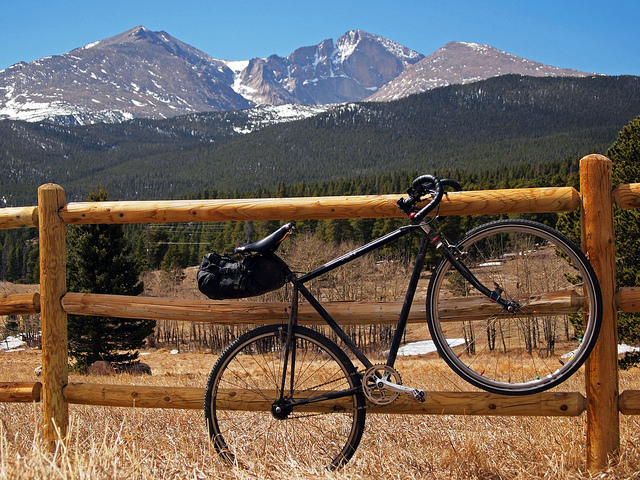
Doing a multi-month trip is usually a very big decision, and something that attracts someone in transition with school/careers may be in a position to take on. Also take in the fact that there’s currently no guidebook on how to do a multi-month 14er bikepacking trip, so very, very few people have this idea on their radar outside of, “Well wouldn’t that be cool”.
Regardless, this confirms my suspicion that most of the trip plans I design for inclusion in the guidebook should be trips that can be comfortably done in 2-3 days: ride close to the mountain, camp, hike in the morning, then ride home – perhaps with a stop in town before finishing. A larger trip will just string these smaller trips together: ride to the mountain, hike, ride to the next town – and repeat.
Hiking Experience
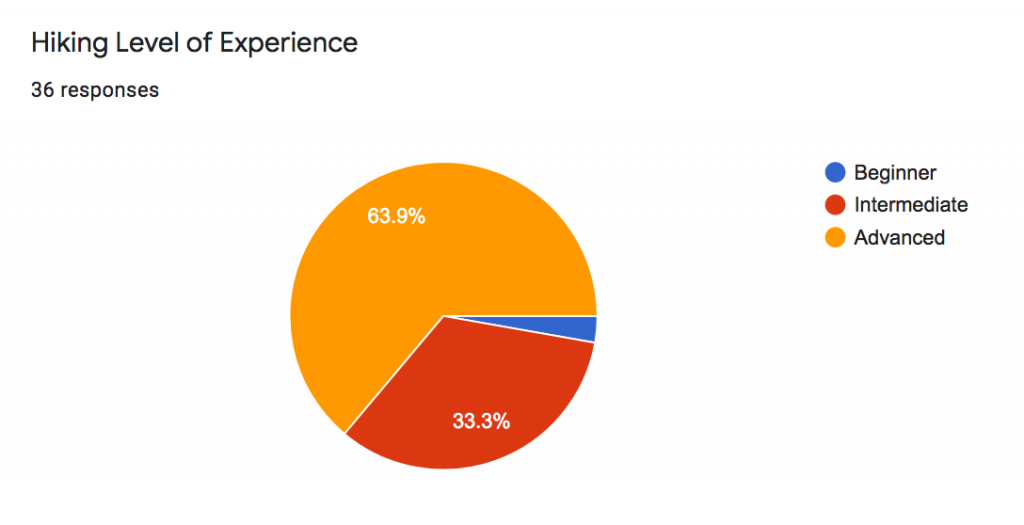
Much to my surprise, the majority of people responded to having an advanced hiking level! Seems as if I can compel people to get on the bike to ride to the trailhead, people are pretty comfortable once off the bike. This does make sense, but is interesting to me to be the inverse of how I got into hiking. Before I hiked my first 14er, I had already ridden bikes in three continents! It took awhile for me to wonder if there was anything worth riding to in Colorado.
People also responded with quite audacious hikes and backpacks they’ve done: completing most/all the 14ers, doing the PCT and other long-haul trails, backpacking with 50+ mile days, and international trips to the Himalaya.
Biggest Concerns
This was an important question for me to ask, as I wanted to know the blockers for people taking such a trip. From first hand experience, I know how amazing self-powered travel can be, but it’s difficult to express this passion to others in a tangible way. The beauty of travel is that everyone’s experiences are different, so what I enjoy about a trip may not be the same someone else does, and that’s perfectly valid too.
But, if I can help people navigate through some of the bigger issues, I can help people get out there, have fun, and be safe. These concerns should be a fairly substantial part of the book, outside of the route narratives.
Some concerns that were echoed through the responses:
Logistics/Navigation
This makes sense, and simply what the guidebook is for. People need to know where to go, how get there, what to expect along the way, and what resources are available from start to finish.
For hiking/backpacking – especially off-trail, a printed map and compass can make sense. But, this makes no sense for a bikepacking route and I won’t be publishing many cross country, off-route routes.
I’ve done the Tour Divide twice using a printed narrative: turn by turn directions tag with mile numbers. This method is maddening – almost criminal.
For my own two peak-bagging trips, I saved all my routes as GPX files, that I then downloaded into my Garmin GPS. All I then needed to do was to follow the track I had created beforehand. These GPX tracks can also be imported into other tools for further analysis. If you have a phone, you already have a full GPS unit, with the help of an app like Gaia – no need for a dedicated unit.
This will be the primary way that I’ll share route information, along with route narratives that give you an idea of what to expect terrain-wise. The route narratives won’t be something that you’ll be able to use on its own. I would also LOVE to have large maps of some of the larger trip designs – say: entire sub ranges, but I’m getting ahead of myself.
Logistics includes access issues: where can, and can’t you ride a bike, for example. I’ve already started on a chapter about this topic.
Camping
Logistics also compromises topics like camping. Without knowing where to camp safely and legally, you can’t go bikepacking. Thankfully, Colorado makes this very easy, as we have so much public land on which it’s legal to camp. My guide will primarily focus on free/dispersed camping. I’ll also mention National Forest campsites that may need to be reserved/paid for in advanced, if they’re extremely useful to my readers.
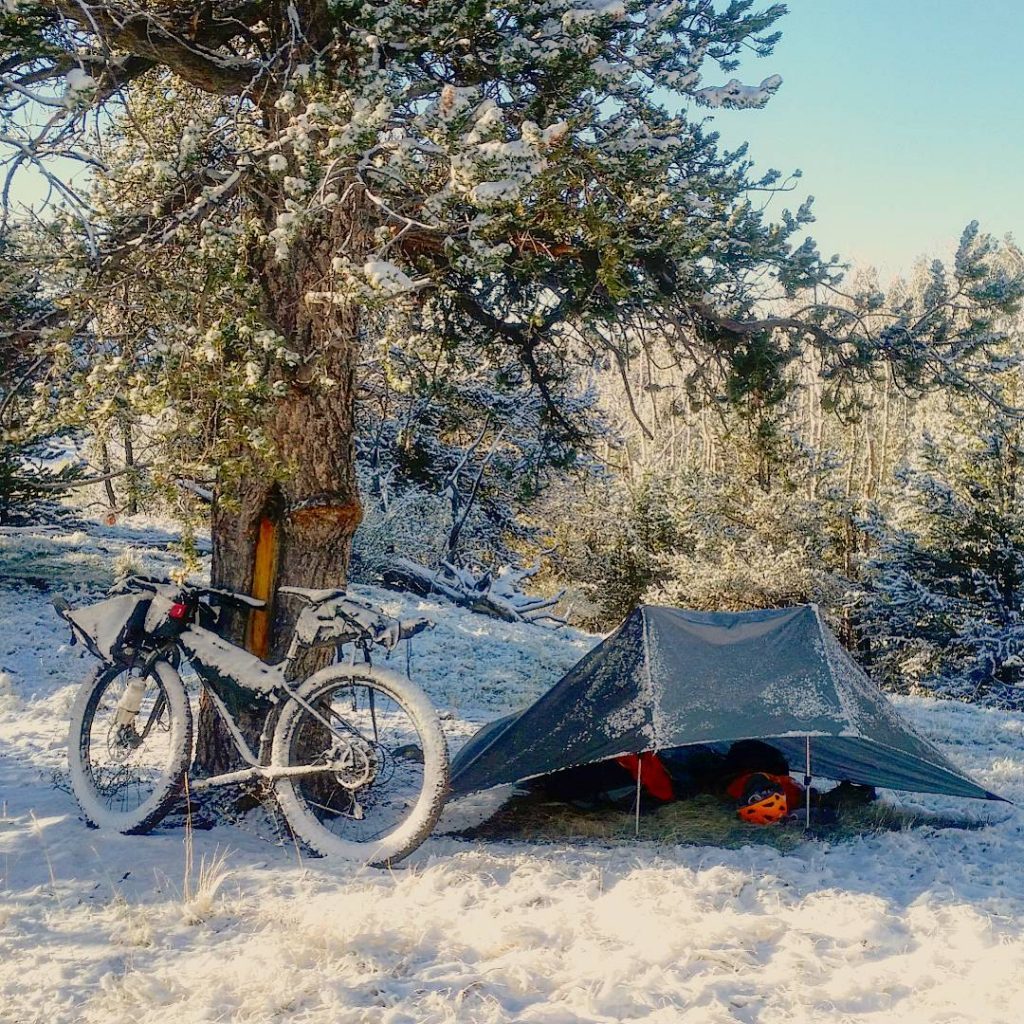
Weather
Weather was another topic of concern for people. My guidebook will focus on taking a 14er-focused bikepacking trips during the summer months: mid-June to mid-September. Realistically, the season for self-powered peak bagging is only 90 days long. This is still enough time to comfortably bag all 58 Colorado 14ers.
Weather during the summer months for bikepacking is generally favorable, although snow storms can move in any day of the year. The largest concern is lightning, and lightning is more of a concern during hiking, rather than when riding your bike.
A chapter though, should be dedicated to the proper gear one should haul, including what sort of foul-weather gear should be in your own checklist.
Bike Security/Theft
A big, big question people have is what the hell to do with the bike, when out camping. Do you lock it up, and if so: where?
Having done hundreds of self-powered peak bagging trips and never having gotten my bike stolen, I can still see why this topic is one of gross importance. I’m pretty sure with a few guidelines on proper bike security at trailheads, we can keep people’s piece of mind intact, when out hiking. What I do must be working.
Transitioning from bike to hike
Another subtopic is, how do you go from riding a bike, to hiking a trail? This ties into what do you do with the bike after you’ve arrived on the trailhead.
Fitness
Another topic is fitness: as in, do you have enough fitness to embark on such a trip? This is a legitimate concern: riding a bike, then summiting a mountain isn’t exactly the easiest thing you can do. But, we can scale trips to fit different parameters.
I am already planning bike legs that will take only an hour to complete from town before you can rest up for the hike the next day. The average bike leg will be around 25 miles.
To echo what I’ve already said, this guidebook isn’t about going fast and sleeping little; the trips themselves should be fun, and altogether doable. Those who would like to go fast can simply link more than one single route together.
Crowds
From the responses, people seem to want to use a bike to access routes that may not be so easily or so attractive to get to by car. People want a little bit solitude out there.
Makes sense, and is a great excuse take a bike ride. The routes I design will hopefully stand up as excellent cycling routes in their own right, even if you decide to not even hike up a mountain.
Anticipation!
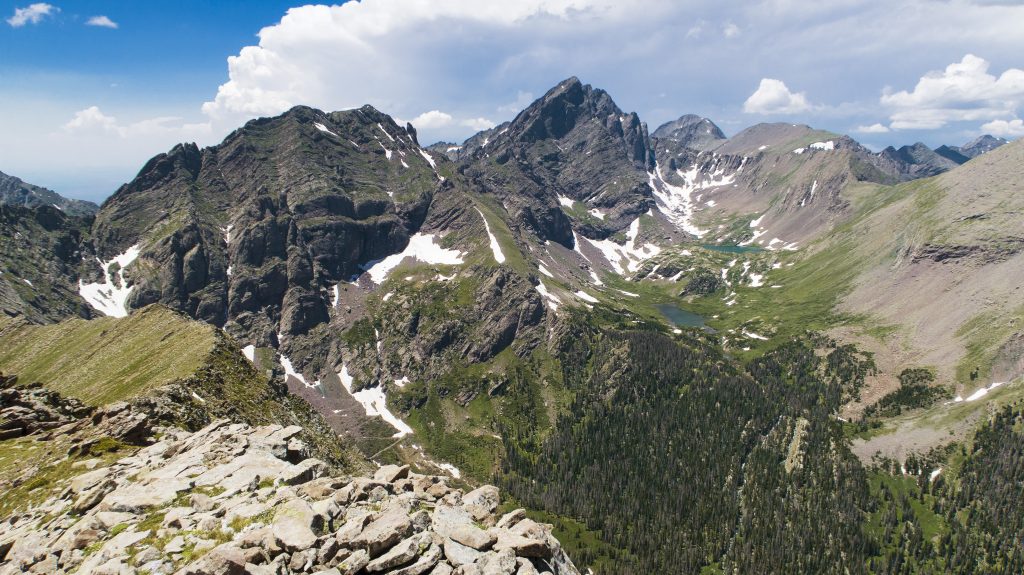
Solitude, adventure, satisfaction of completing a hard goal, fun! I think we’re all on the same wavelength in what it is we enjoy out there. I remember being in disbelief on my Tour 14er trip – every day I could honestly state that what had happened was unexpected, unreal, and awesome. My job is to hopefully stoke that fire to inspire people to take these trips just through the distillation of route narratives.


